Dear friends,
A map below for a quick recap. My last story was about Port Lockroy, with its museum, post office and penguins. That same afternoon we steamed south-west along the coast of the peninsula and through the Lemaire Channel. Both Sarah and I stayed up on the front deck for several hours as we approached the channel and for the duration of the traverse, although most others only ventured out for the last little stretch. It was so beautiful, with a few patches of blue sky showing through, beautiful reflections in the still water and, of course, some penguins.
Lemaire Channel is a strait off the Antarctic Peninsula, between Kiev Peninsula in the mainland’s Graham Land and Booth Island. Nicknamed “Kodak Gap” by some, it is one of the top tourist destinations in Antarctica; steep cliffs hem in the iceberg-filled passage, which is 11 km long and just 1,600 metres wide at its narrowest point.
It was first seen by the German expedition of 1873-74, but not traversed until December 1898, when the ‘Belgica’ of the Belgian Antarctic Expedition passed through. Expedition leader, Adrien de Gerlache named it for Charles Lemaire (1863-1925), a Belgian explorer of the Congo.
Travelling down the west coast of the Antarctic Peninsula looking across to the snow-covered mountains.
Just right over the bow in front of us, another whale tail as a humpback dived.
A patch of blue sky as we approach the Lemaire Channel, the sun illuminating some snowy mountainsides.
A blue ellipse right over the channel.
Icebergs to the left of us, many more against the shore of the peninsula.
Lovely cloud formations and reflections as we come closer,
The twin peaks on our port side as we enter the channel.
Warmly clad for our 4-hour stint on deck as we sail through this spectacular channel.
Mountains to the left of us, mountains to the right as we enter the channel.
No big icebergs blocking the way, only sea ice and small bergs, so we are safe to continue.
We are not the only ones going through the channel today, these penguins are travelling too.
Seems a few have abandoned ship – too slow maybe.
Clearly must faster to swim, this little group keeping pace with our ship.
Many more of the passengers out on deck now to marvel at the scenery.
A gap in the floating ices allows for a beautifully reflected mountain in the still waters.
Three small icebergs float over a beautiful reflection, turning the world up-side-down.
Almost at the end of the channel and the thick slabs of glacier ice descend into the sea.
The deeply striated and cracked ice on the tip of Booth Island at the end of the channel.
Later in the evening, we took a zodiac tour through the ‘iceberg garden’, sometimes called the ‘Iceberg Graveyard’, where numerous and wonderfully shaped icebergs are caught, many of them having travelled many hundreds of miles from their original calving site, or cracked ice-floe, and now seemingly trapped by currents swirling through the channel and nearby bays.
An eerie light filtered through the clouds, was somehow even more impressive than had the scene been bathed in sunlight.
A leopard seal lies on a small berg.
The leopard seal also referred to as the sea leopard, is the second-largest species of seal in the Antarctic. Its only natural predator is the killer whale. Like their feline namesakes, leopard seals are fierce predators. They are the most formidable hunters of all the seals and the only ones that feed on warm-blooded prey, such as other seals. Leopard seals use their powerful jaws and long teeth to kill smaller seals, fish, and squid.
Watching and waiting.
These effective predators live in the frigid Antarctic and sub-Antarctic waters, where they also eat penguins. They often wait underwater near an ice shelf and snare the birds just as they enter the water after jumping off the ice. They may also come up beneath seabirds resting on the water surface and snatch them in their jaws.
The beautiful aqua of an iceberg and a spot of yellow from a zodiac group, add colour to this otherwise monochrome world.
Tiny balls dropping from the overhanging ice, make for a lovely detail along the shelf of this iceberg.
Rounded turrets and stripes of gravel, blue lines undercutting the bergs and adding colour.
Wonderful contrasting textures and muted colours of sky, ice and sea.
Crab-eater seals recline on the snow atop an iceberg.
A two-tone seal stares out at us, but barely moves its head before become prone once more.
That evening, the icebergs were a feast for our eyes, as whichever way we turned there was another sculpted beauty – some very grand in scale with towering ridges and summits, others with carved lines, dimples and holes. These shown below, with no captions, are just a few of my favourites.
The sheer magnificence and wondrous beauty of ice.
And I will finish this blog with a panorama I took from the top deck of our ship, anchored for the night – a last look at the reflections and beauty of the landscape along the Lemaire Channel, so still and quiet
So that’s all for this blog, but as you can see, a photographer’s paradise, and you will understand how hard I found it to choose the best of the many I have, to give you but a glimpse of the magnificent Lemaire Channel and the iceberg Garden.
In the next blog, we celebrate crossing the Antarctic Circle, visit Red Rock Ridge and Stonington Island, become acquainted with Adelie penguins and enjoy an Antarctic bbq.
Until soon, best to you all,
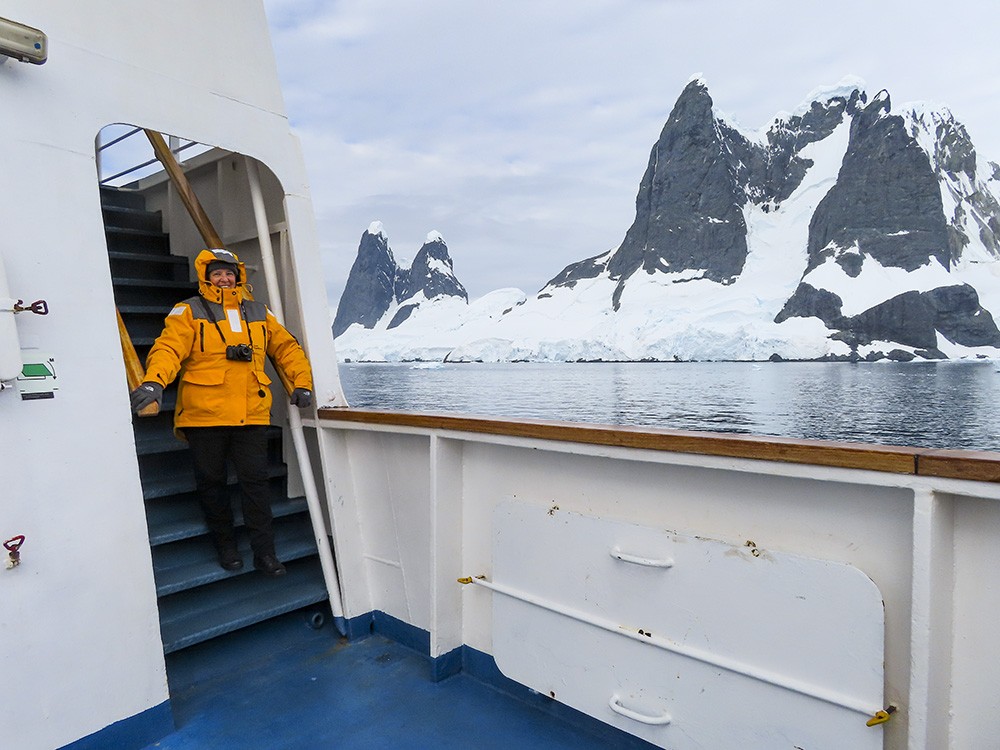
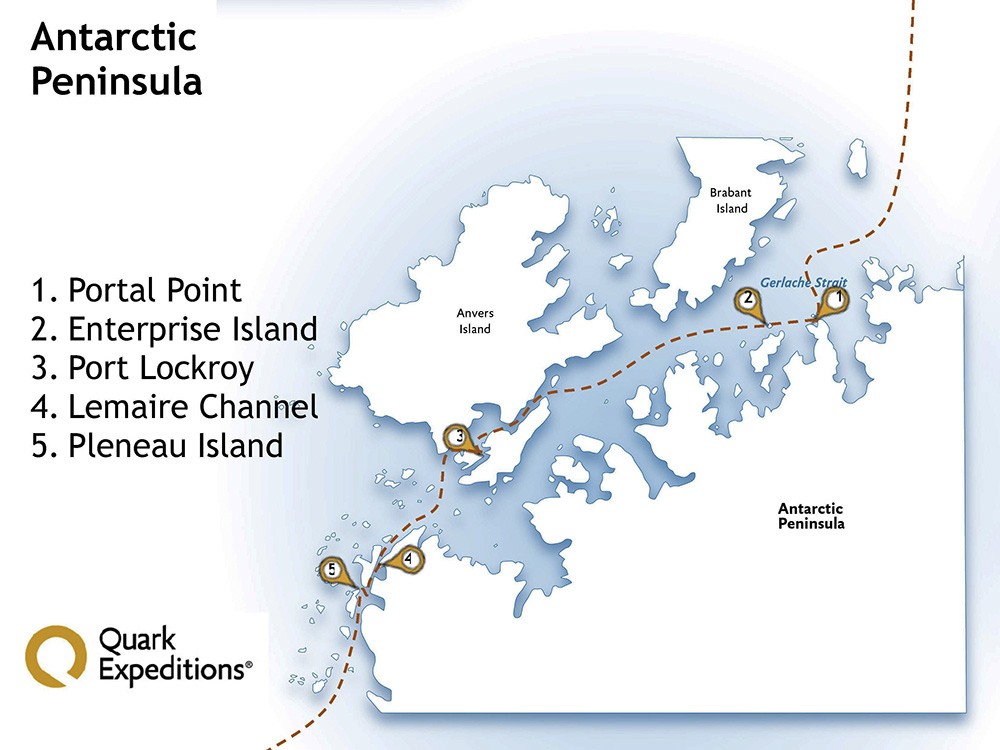
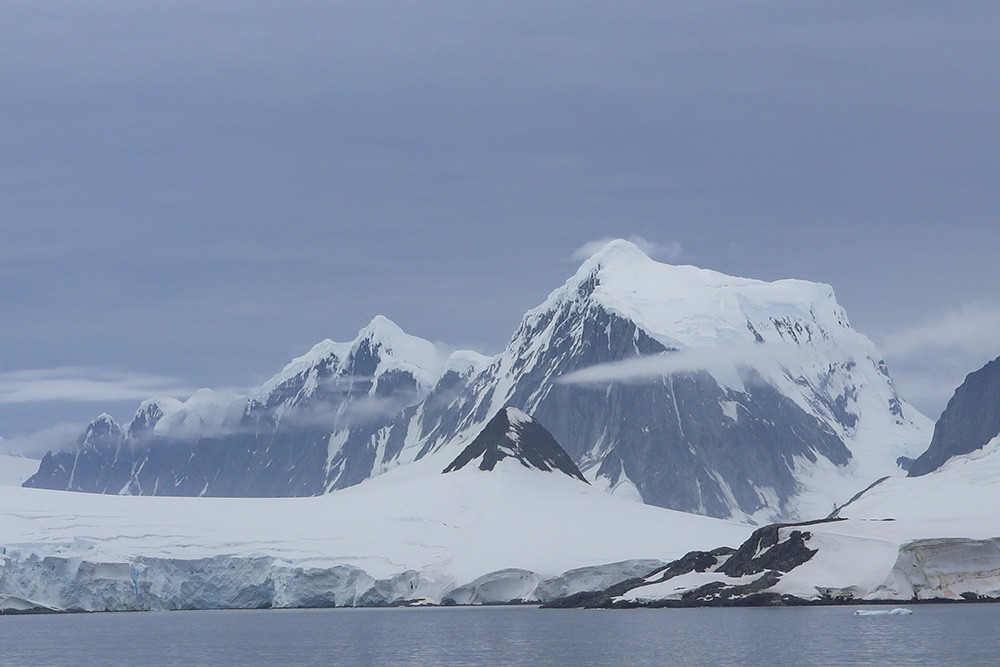
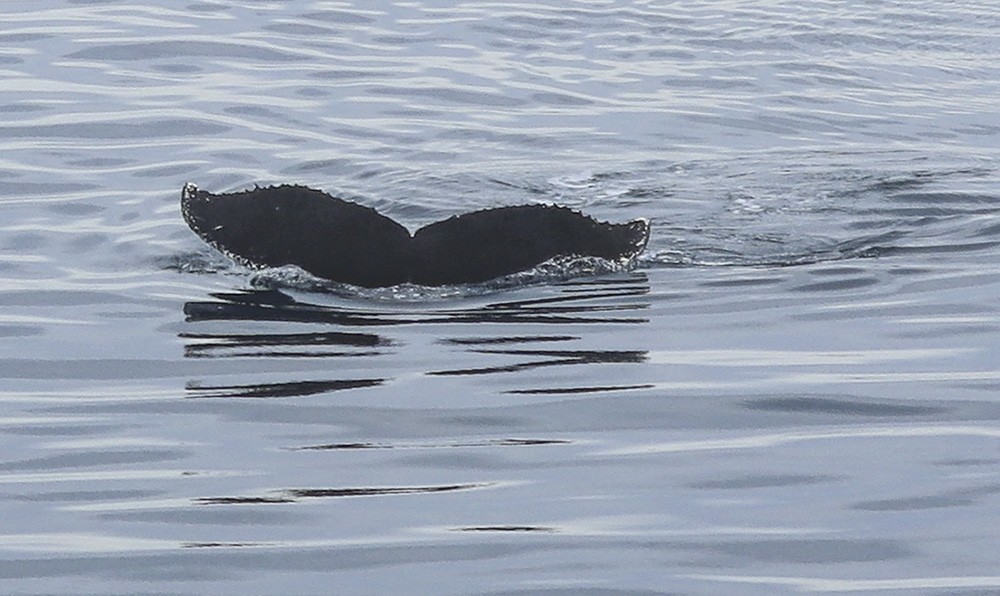
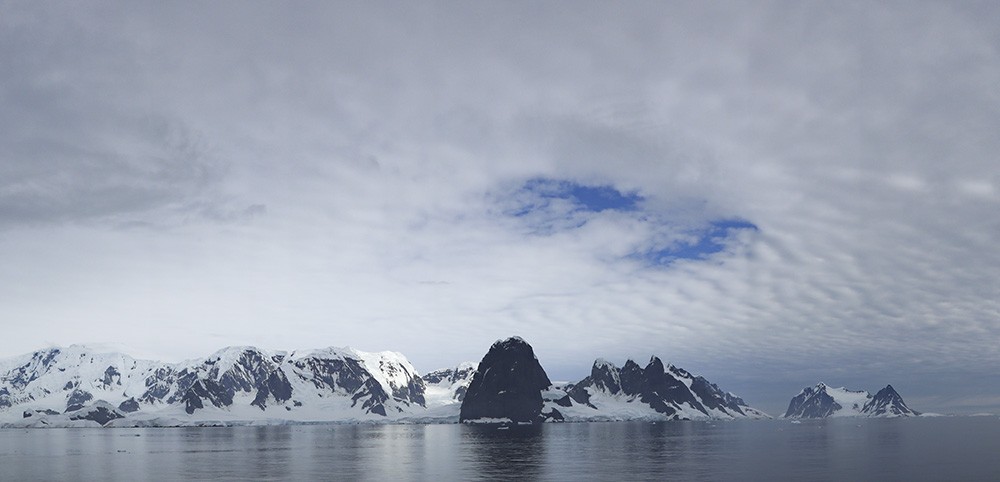
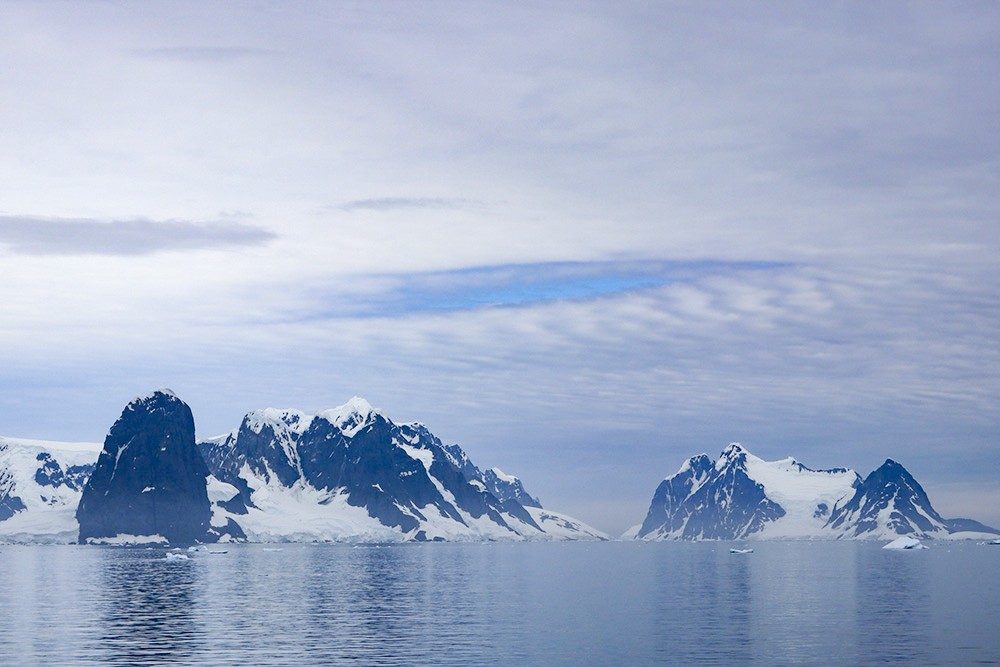
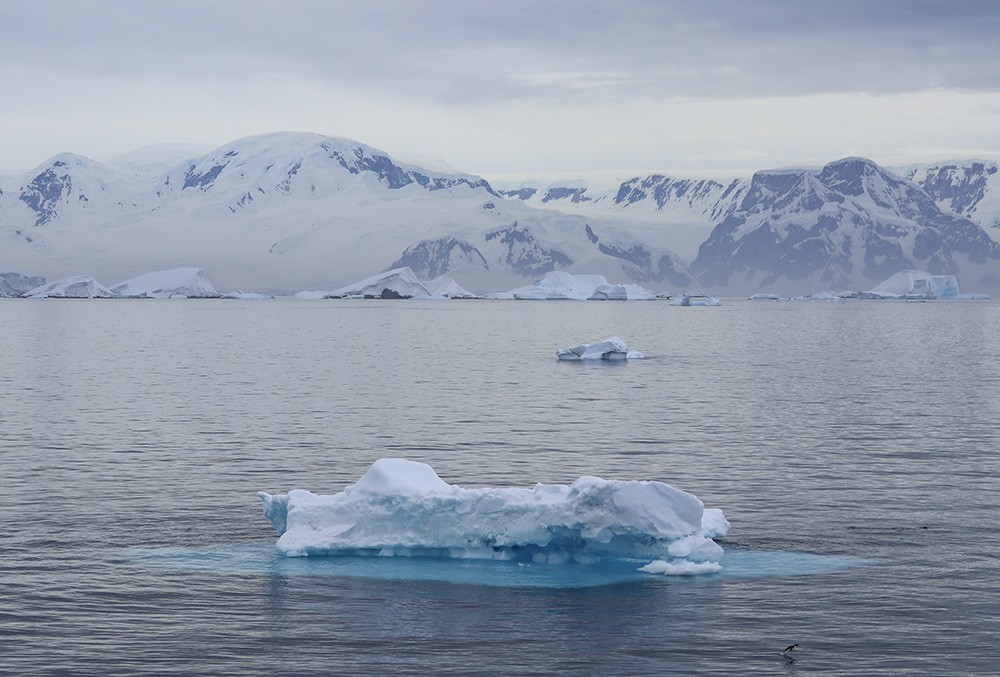

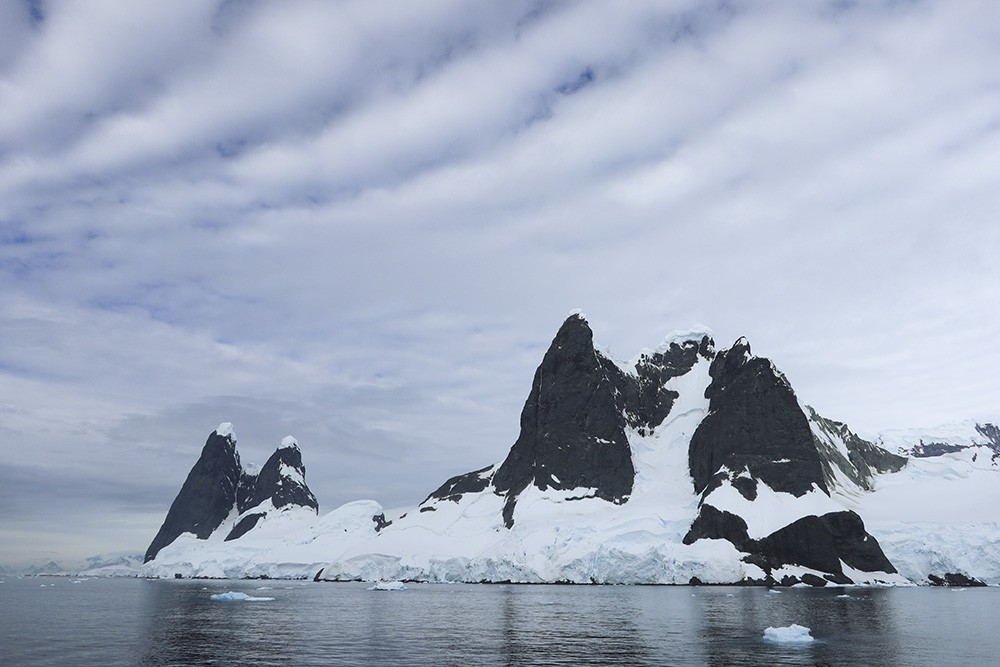
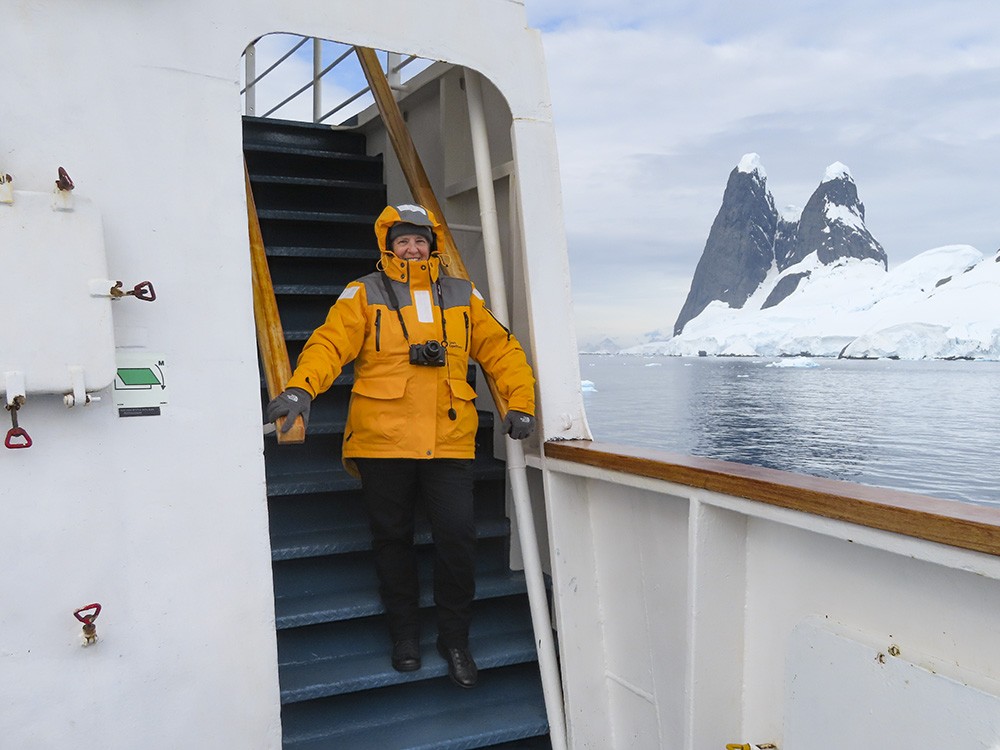
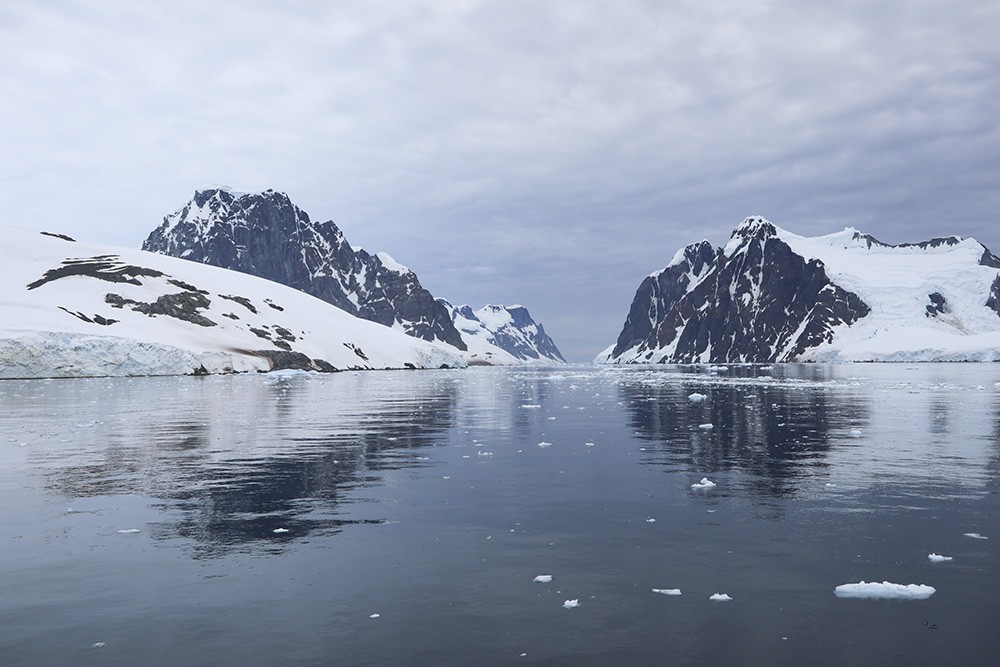
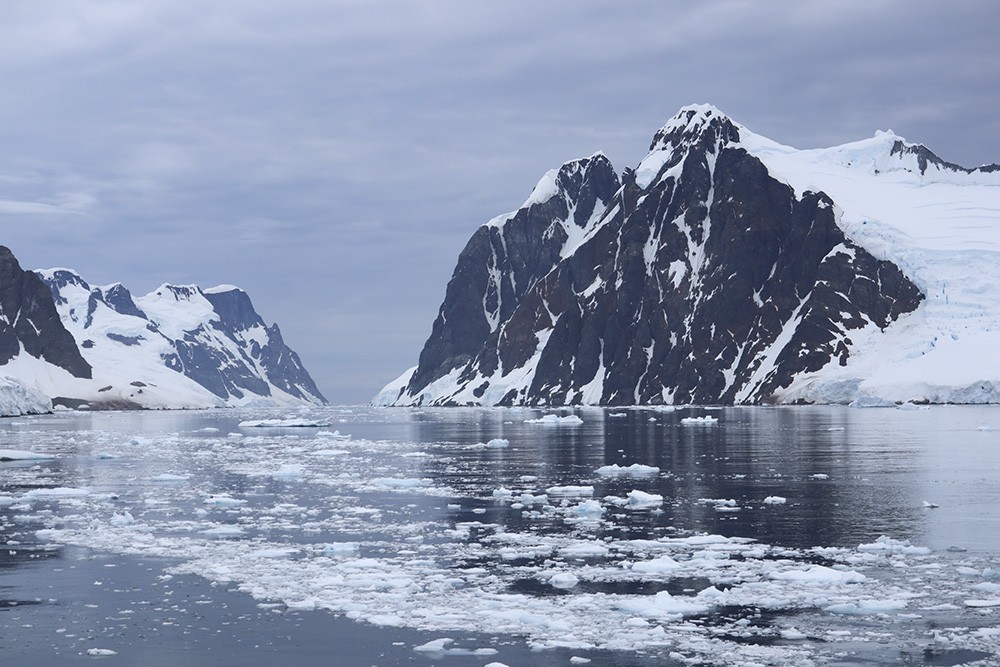
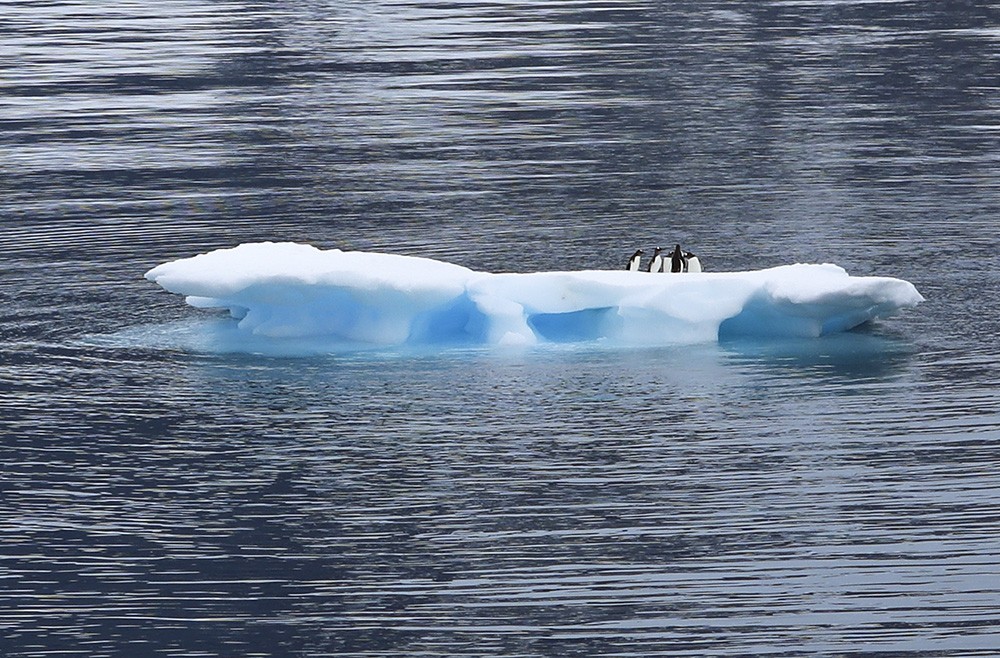
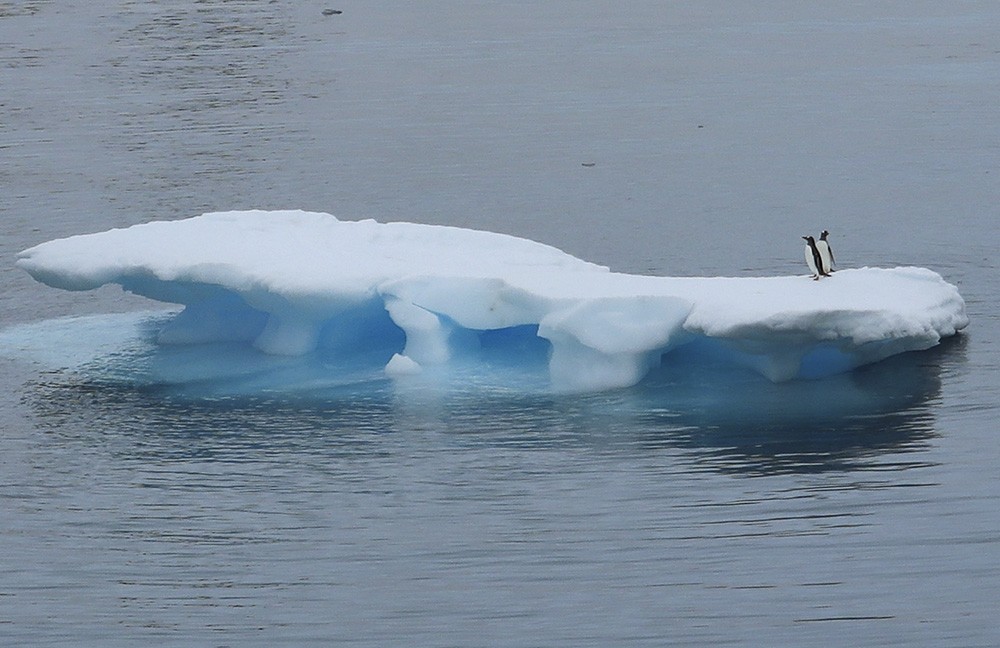
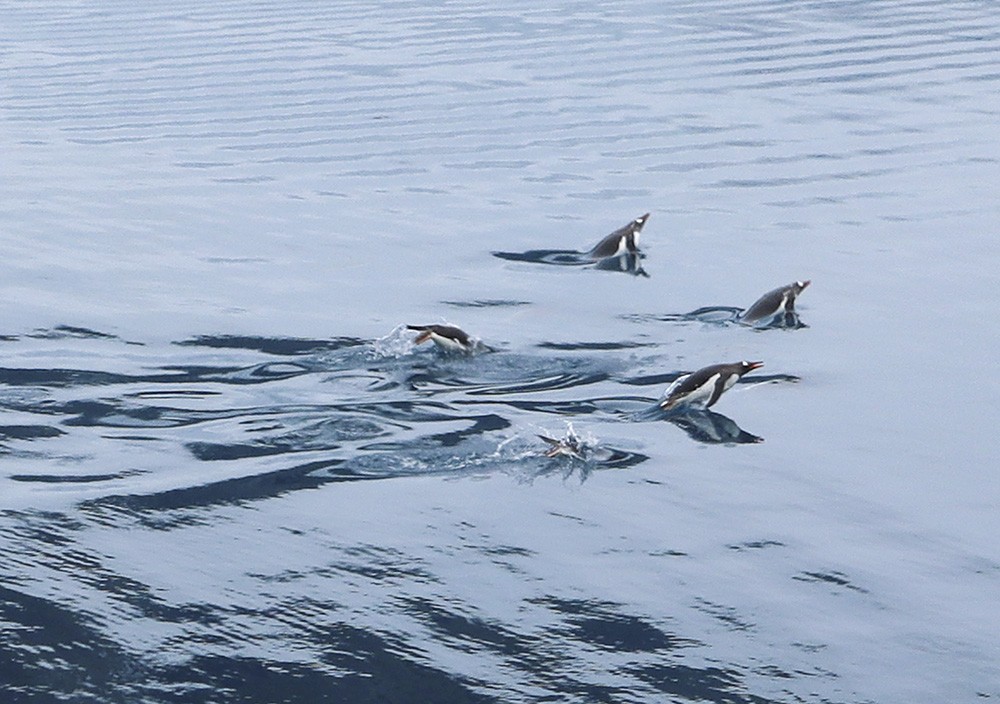
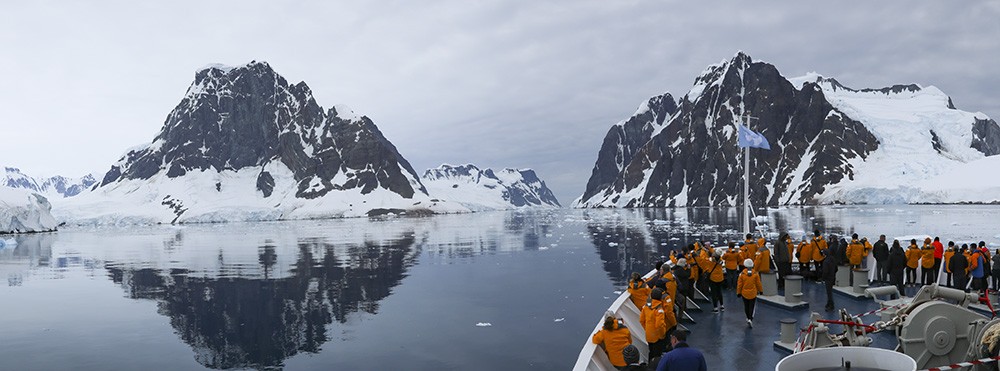
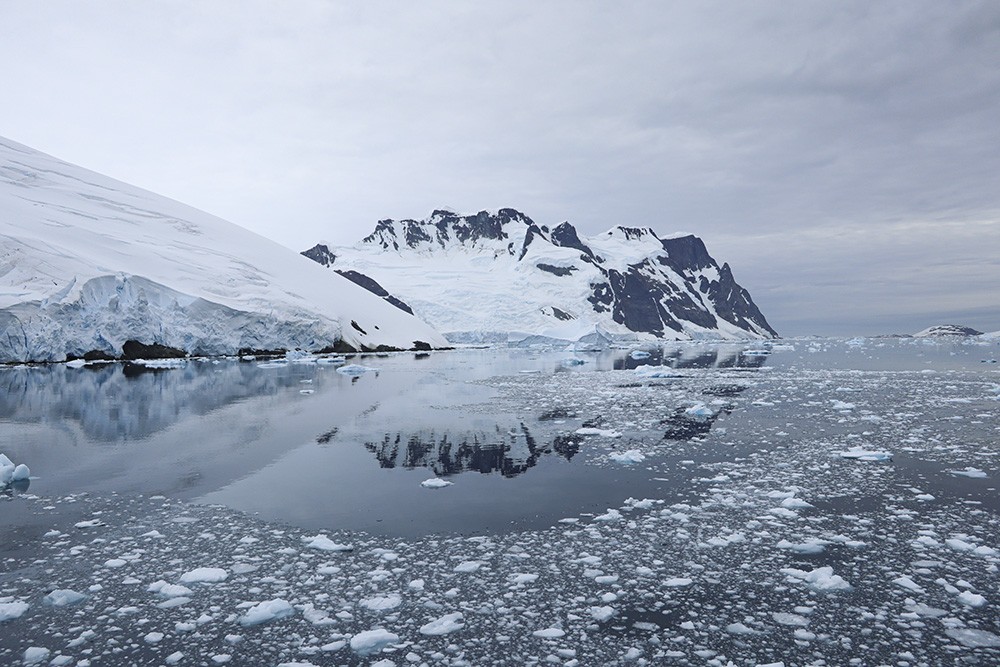
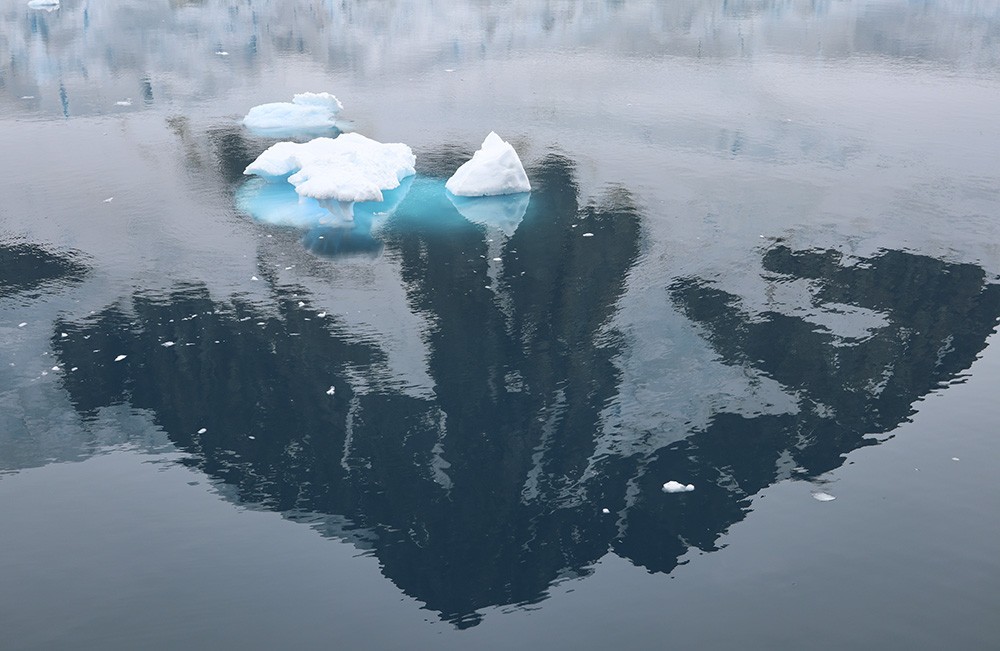
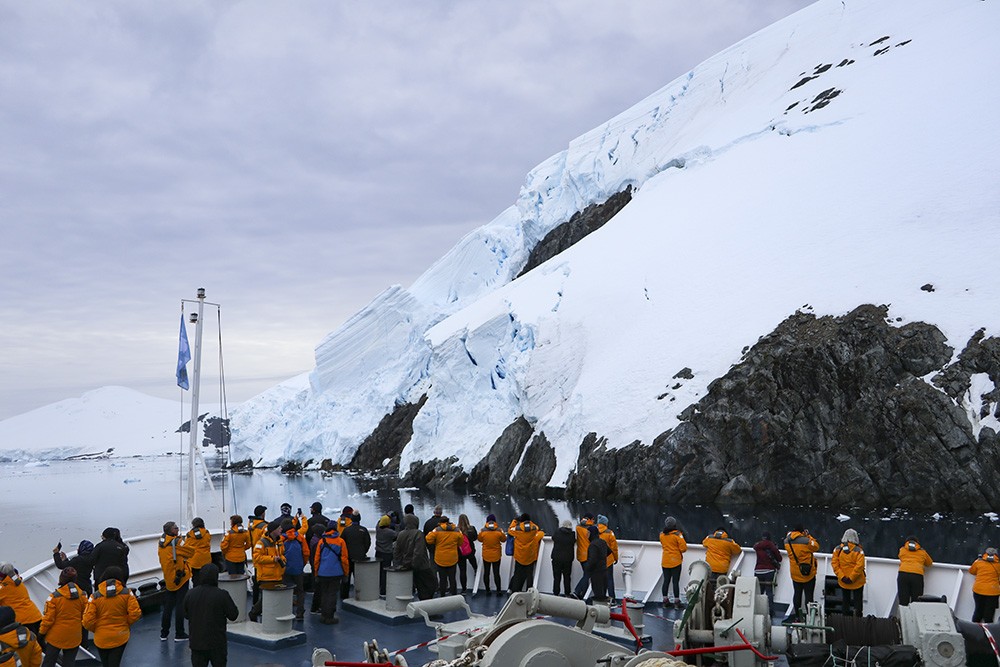
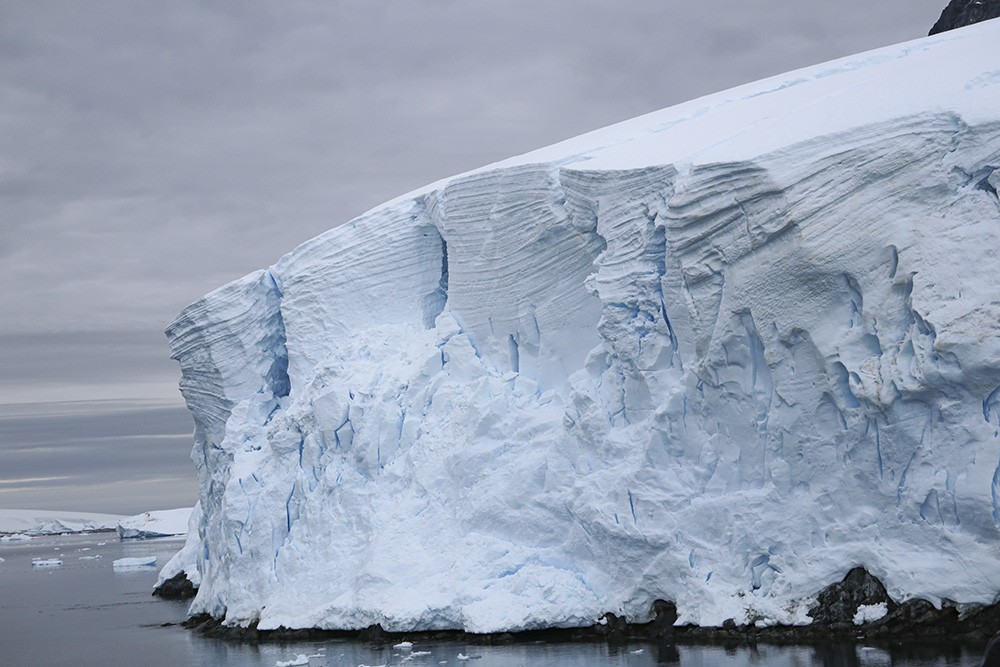
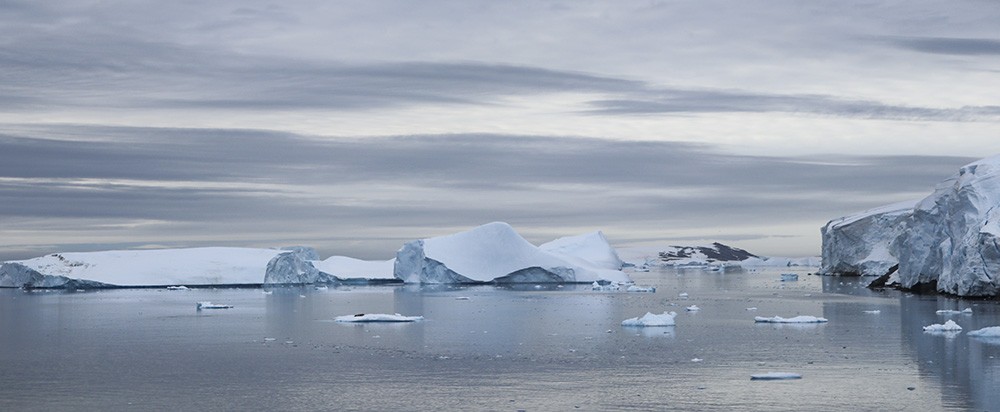
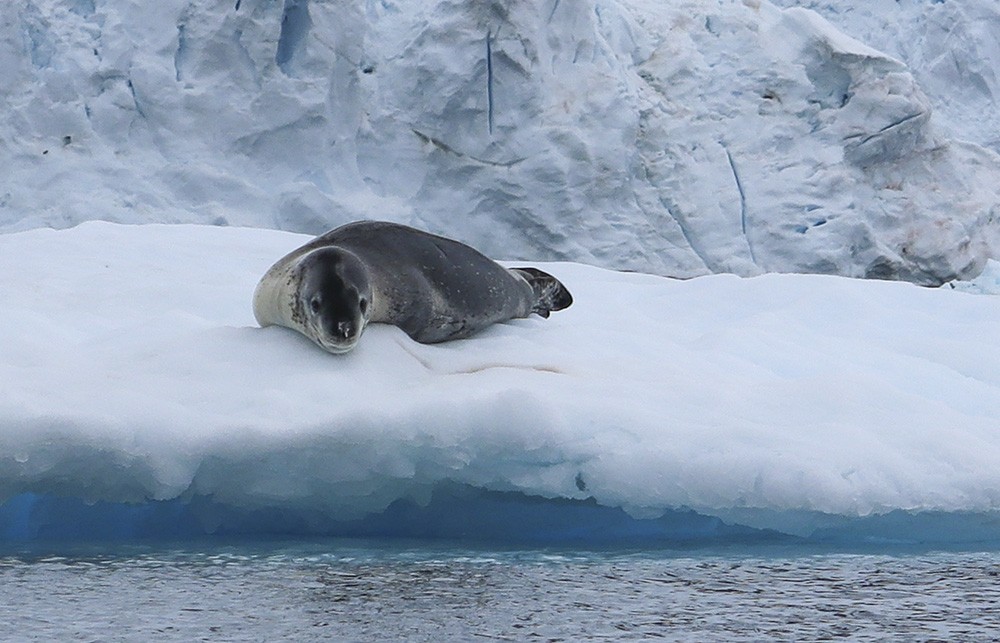
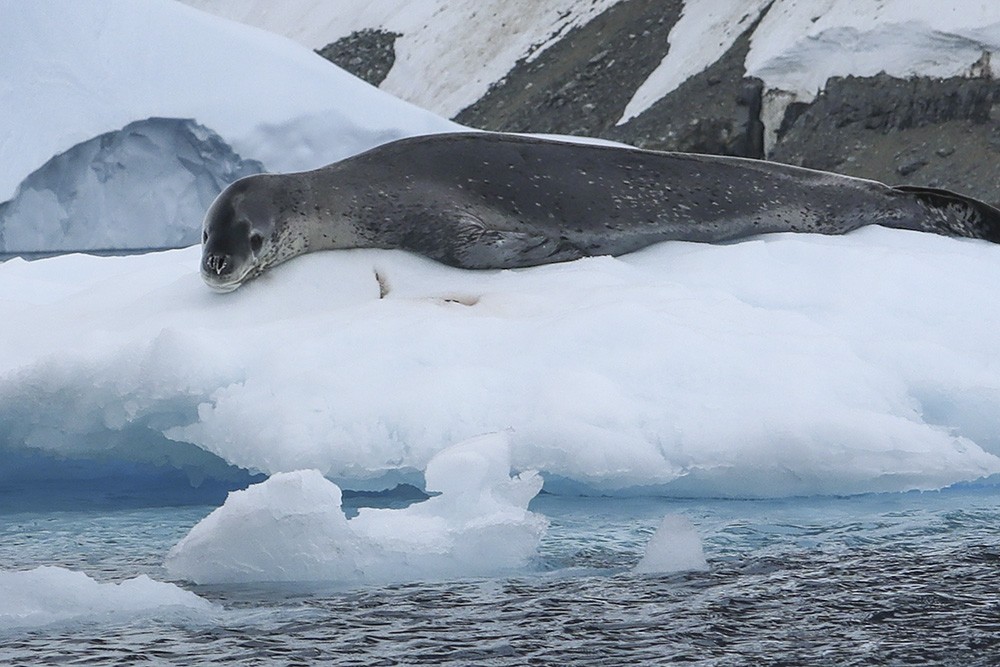

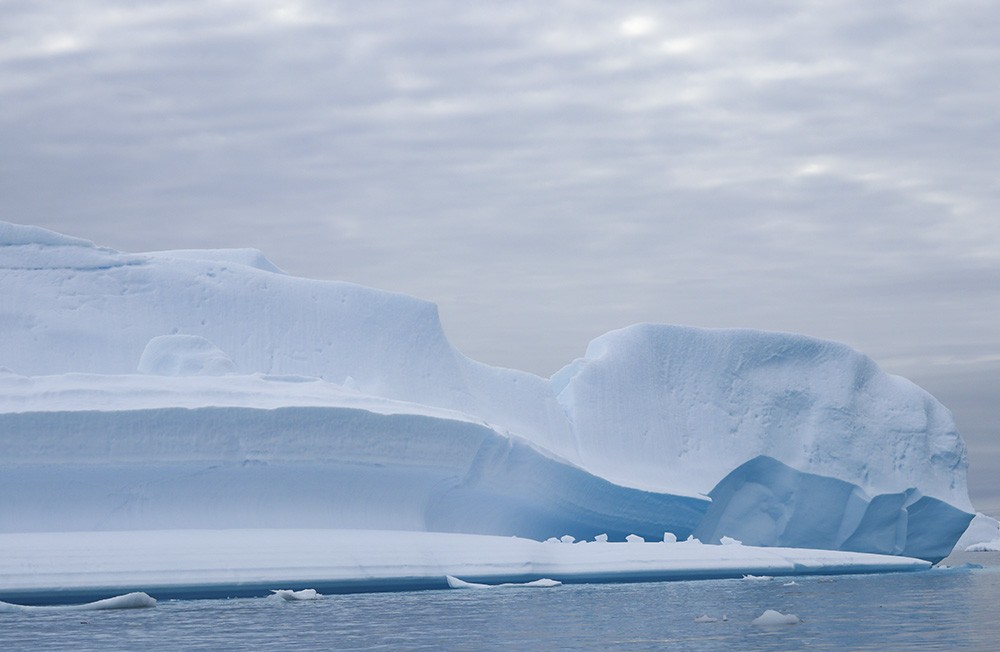
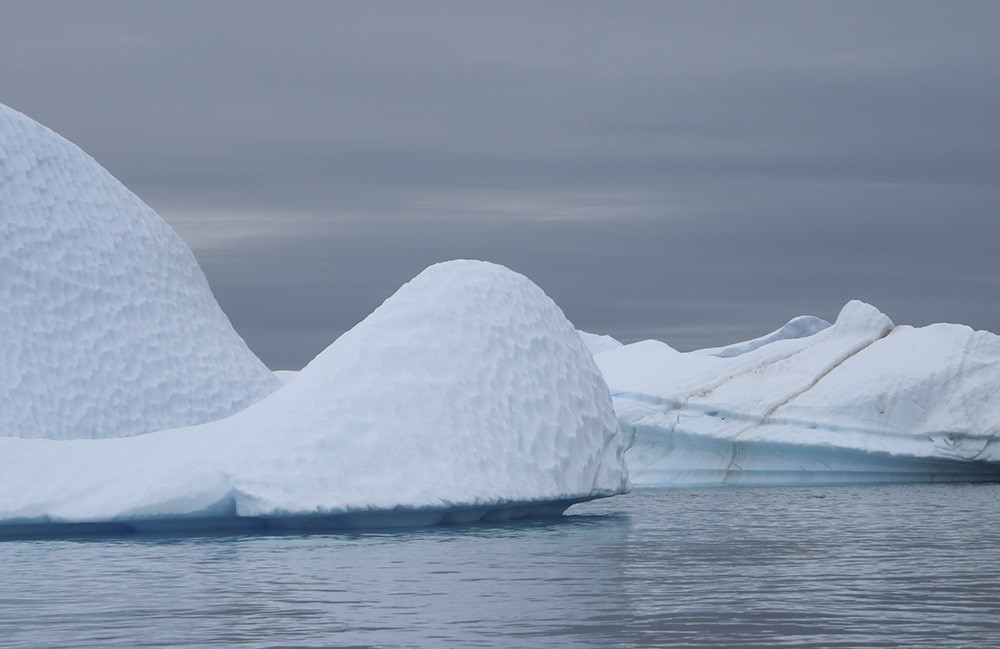
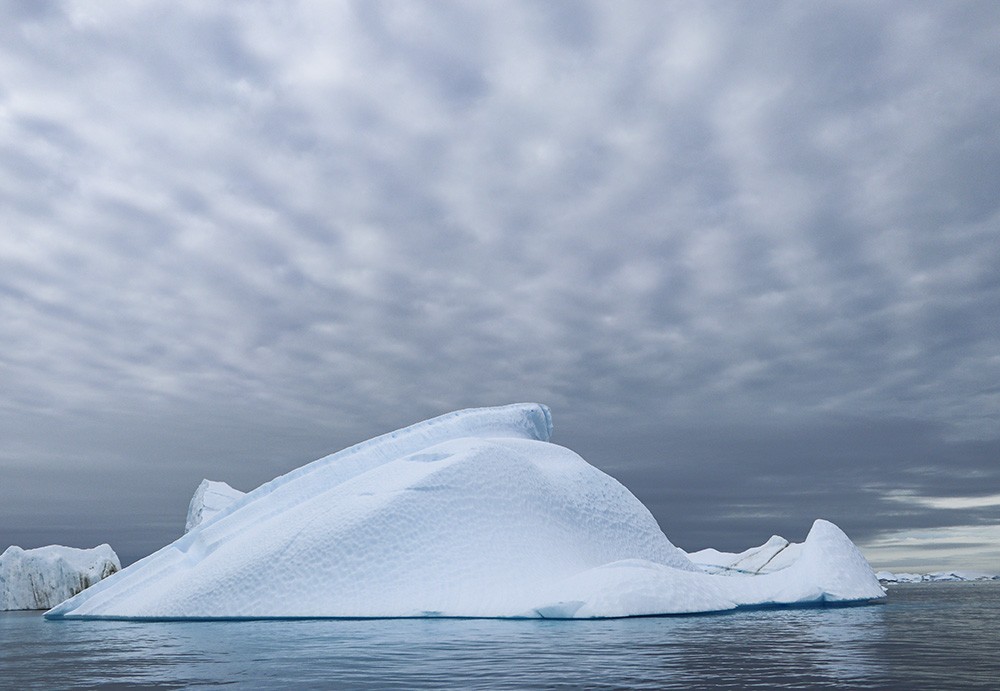
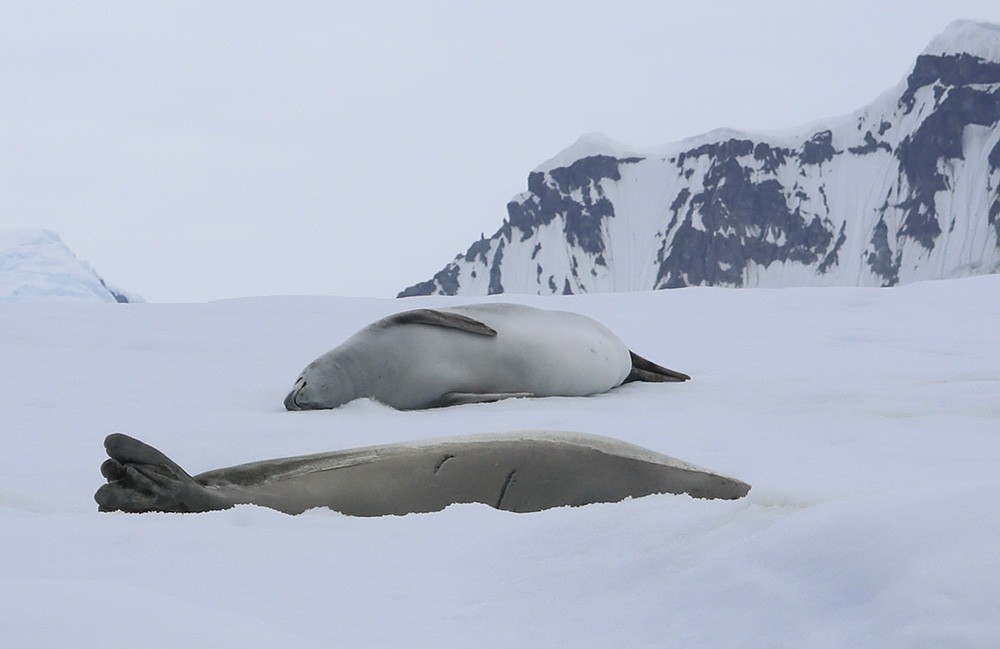
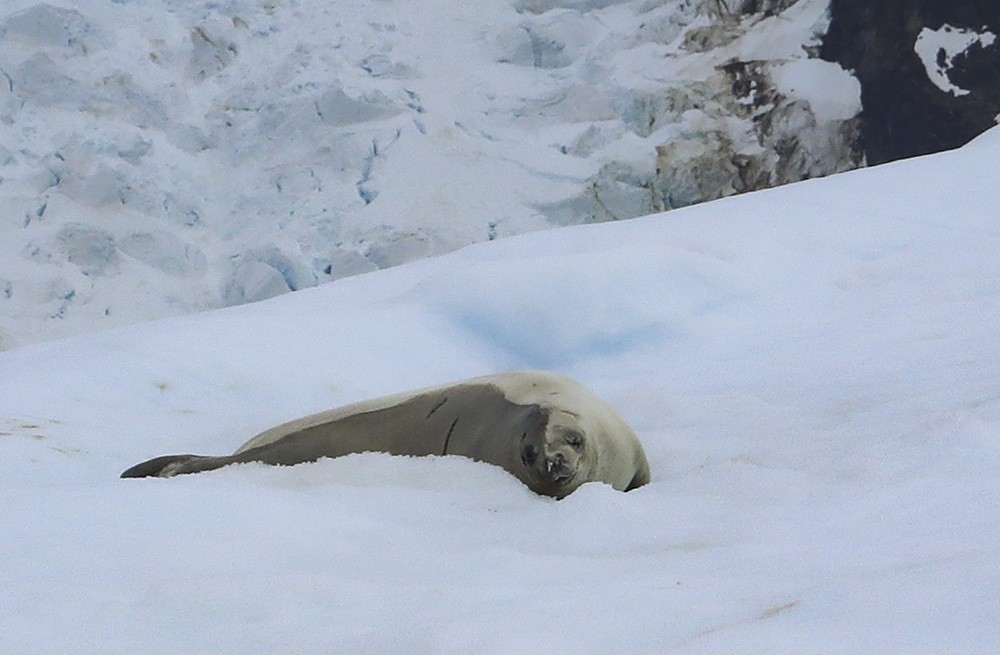
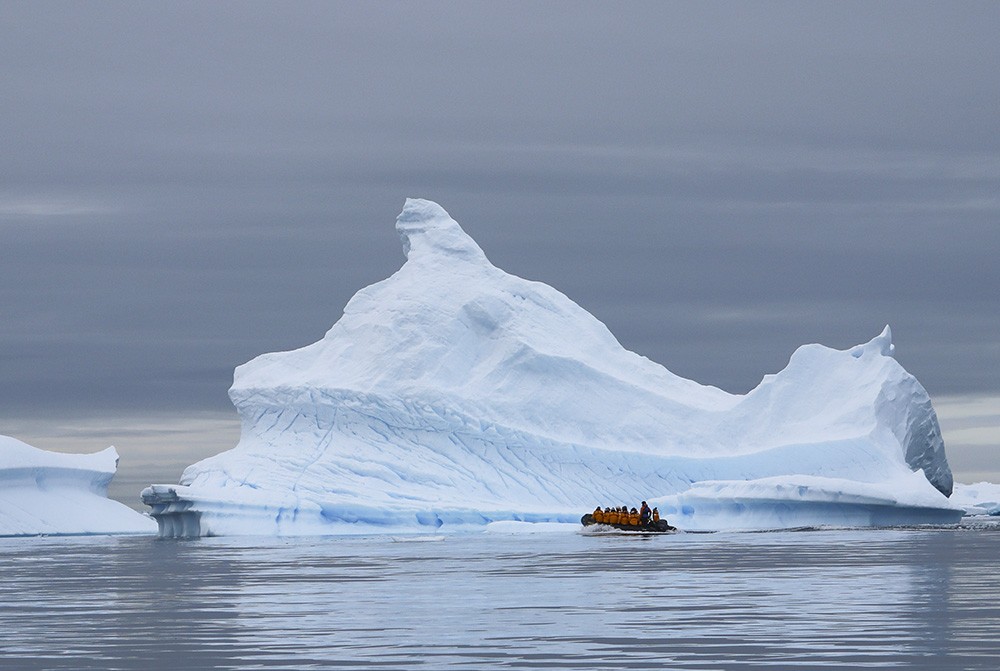
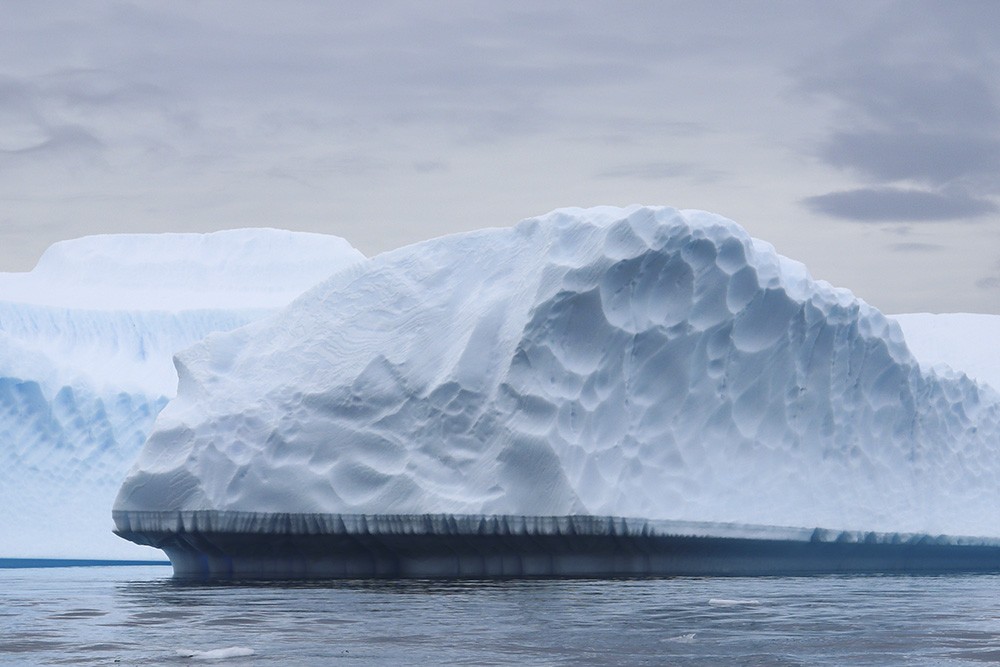
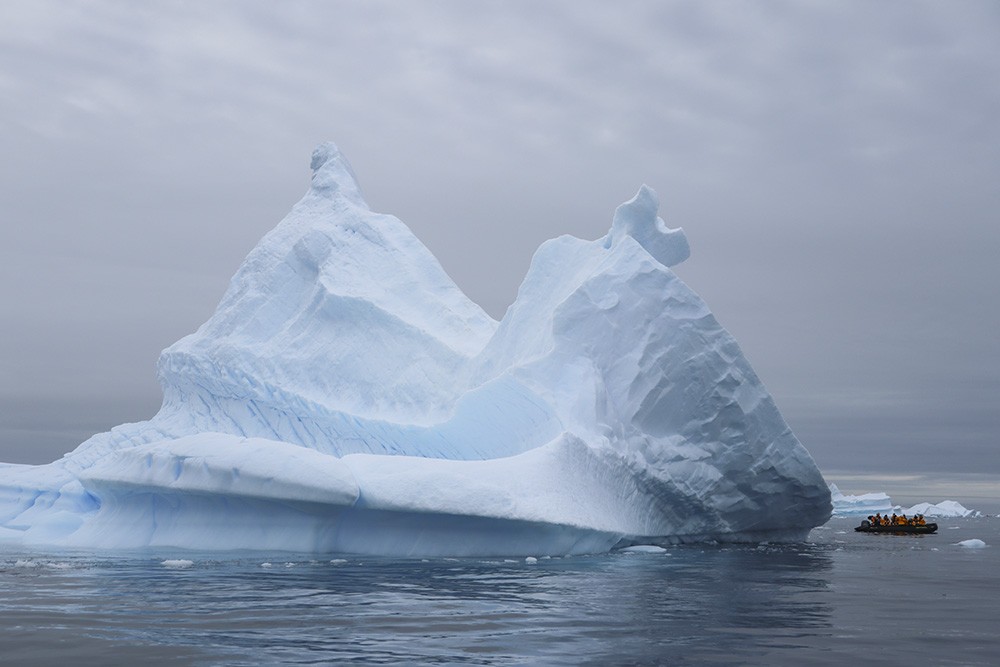
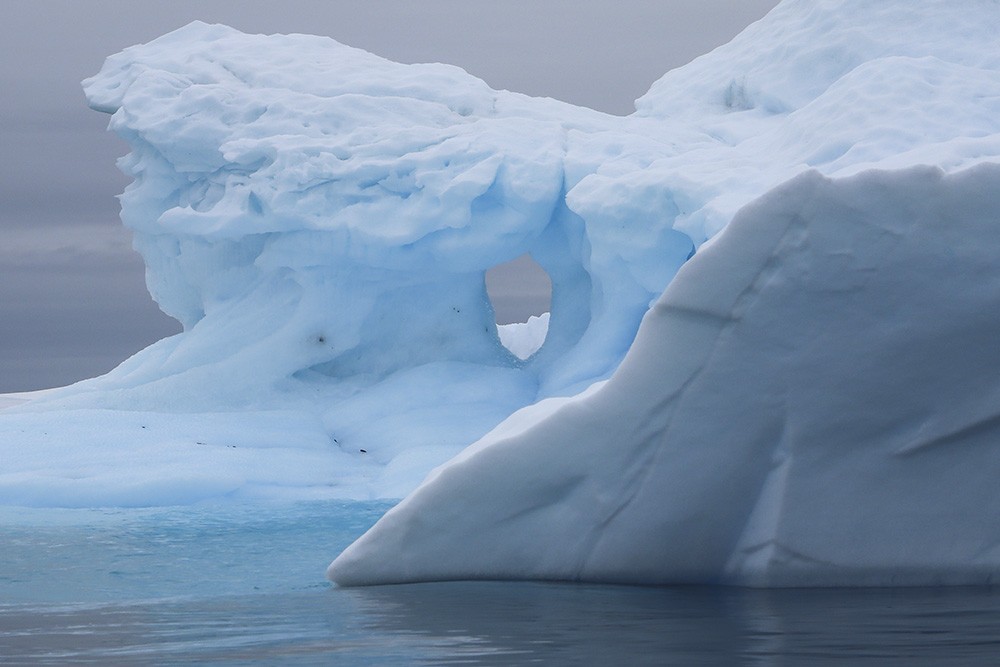
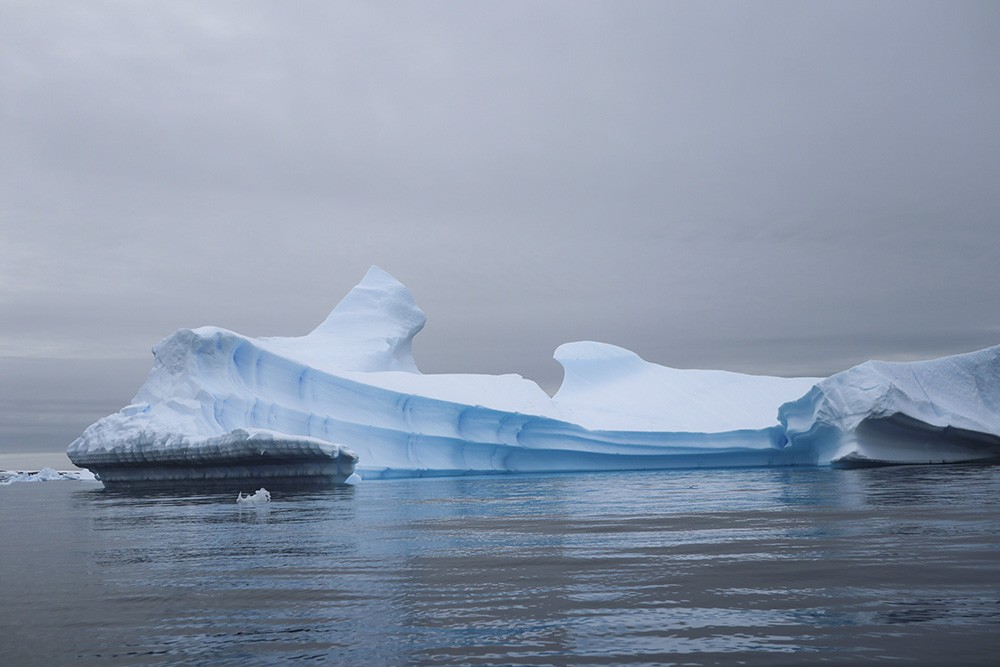
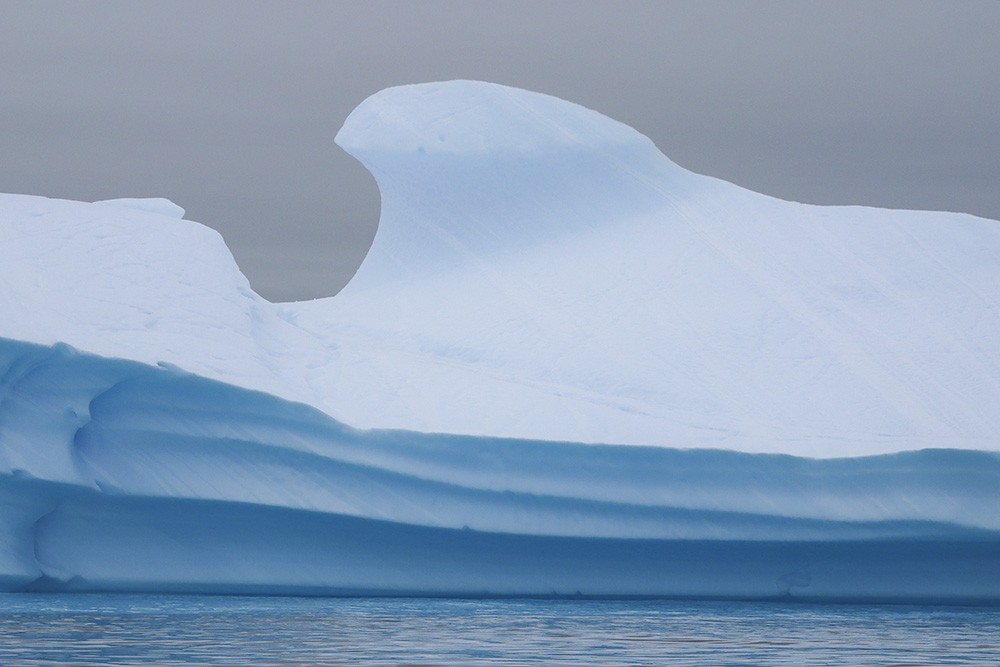
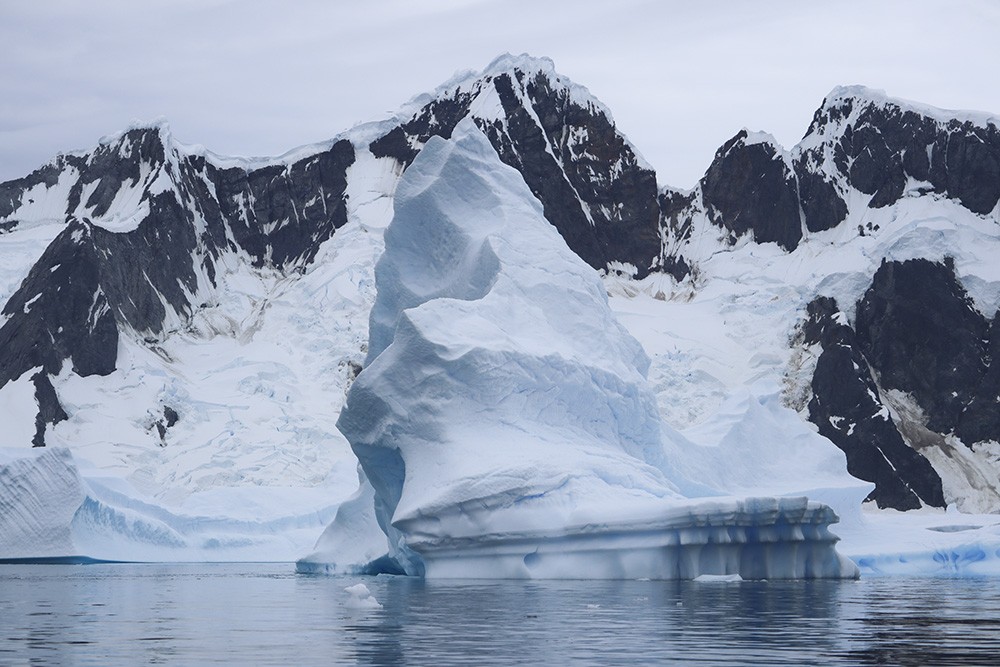
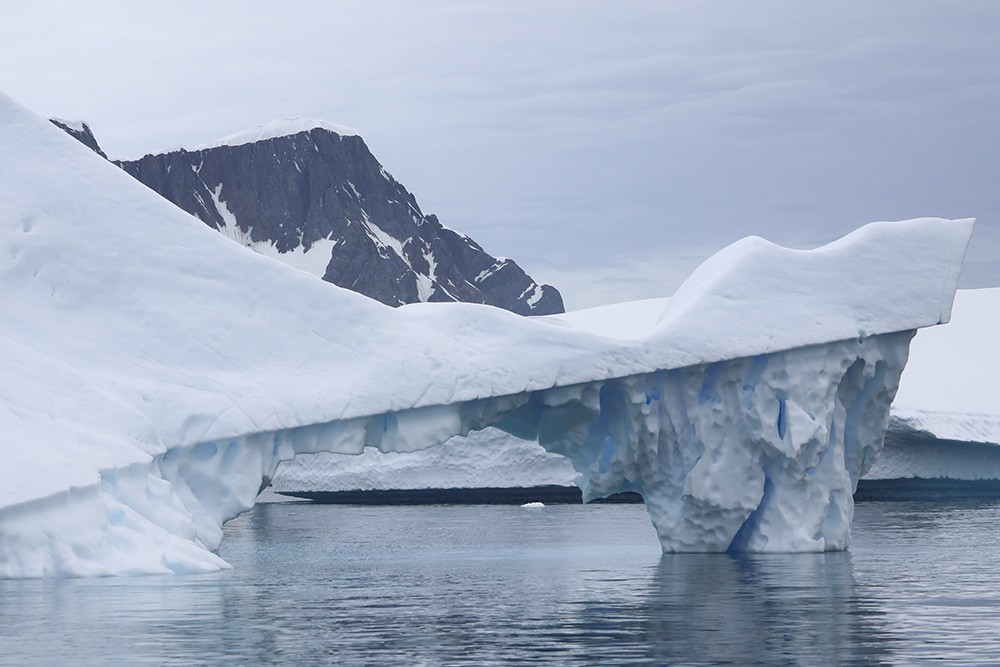
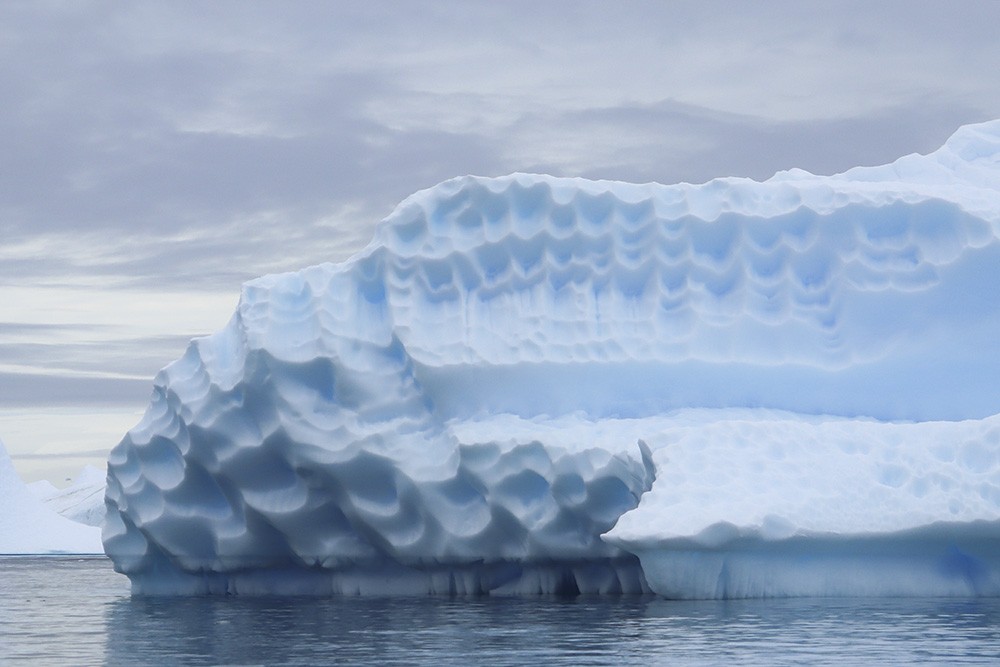
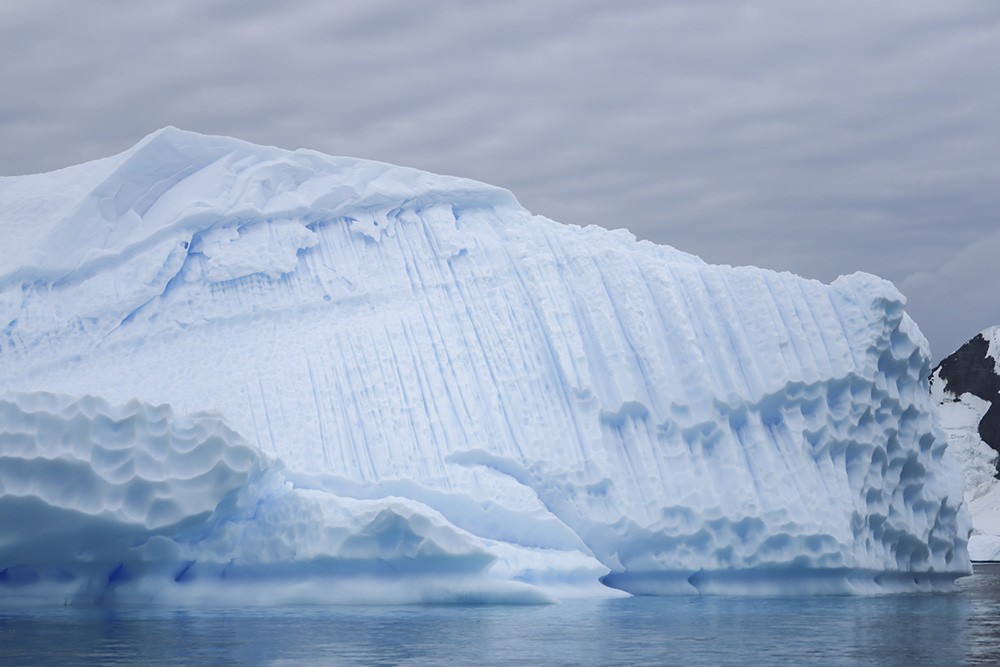
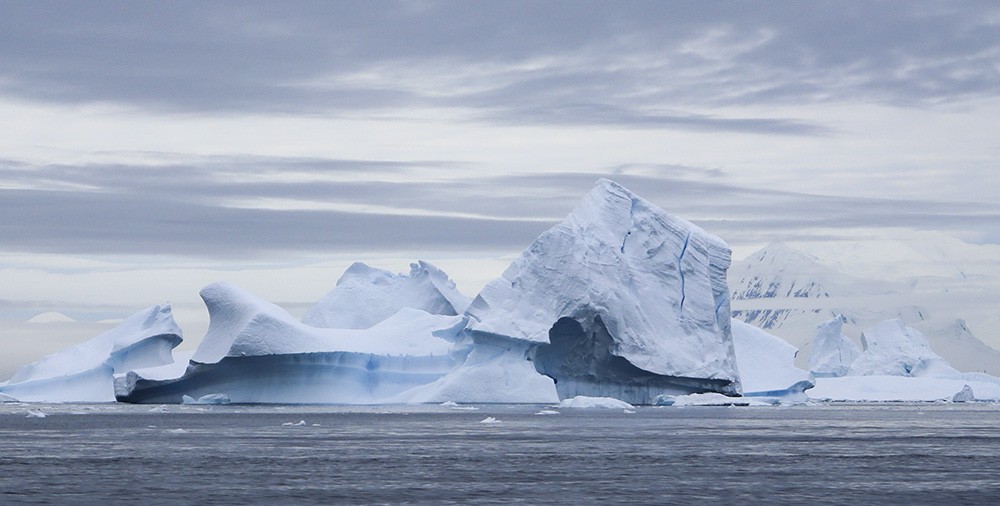
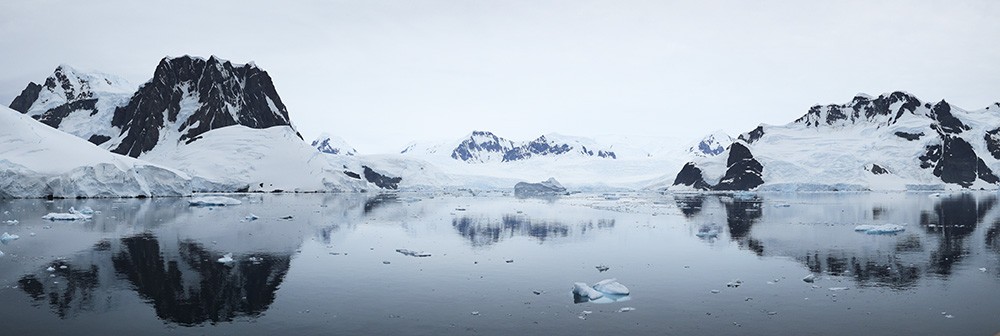
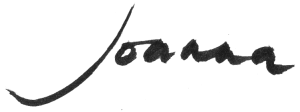
Beautiful photography as always….thanks again, Joanna